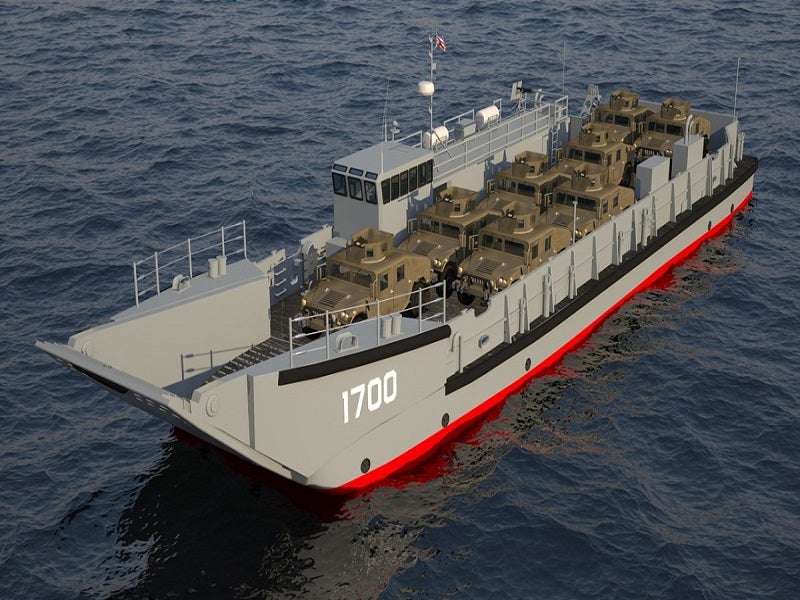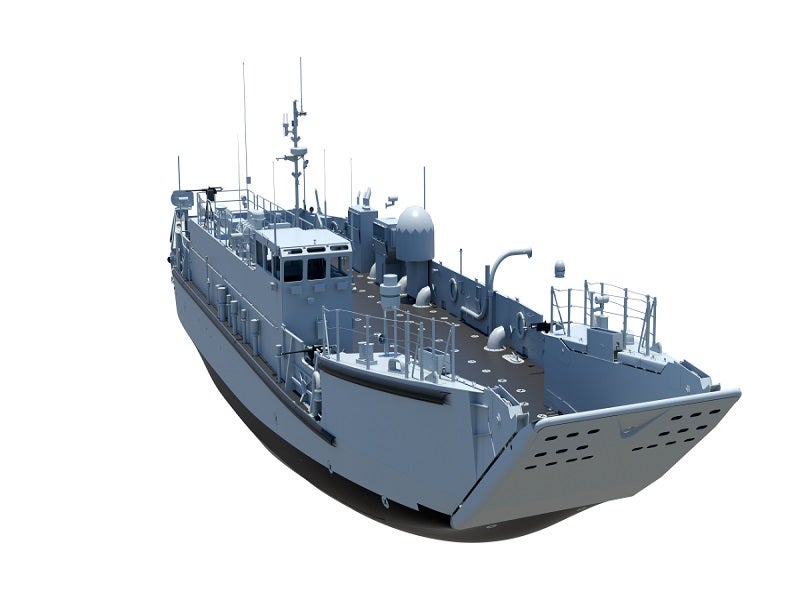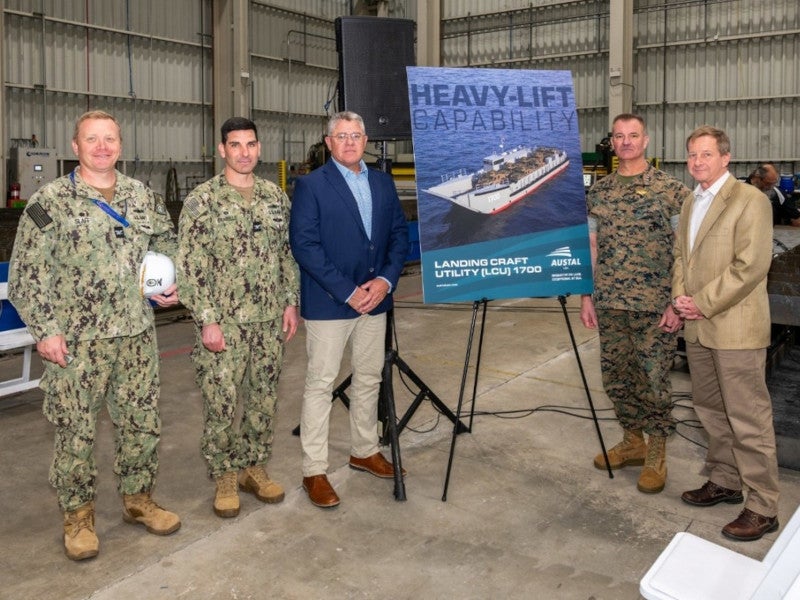Landing Craft Utility (LCU) 1700-class vessels are designed to serve as a modernised replacement for the US Navy’s (USN) LCU 1650 amphibious landing craft fleet.
The vessels are a crucial component of PMS 317, a programme office within the broader NAVSEA Program Executive Office Ships (PEO Ships).
The LCU 1700-class vessels are designed to be deployed alongside the amphibious assault ships of the US Navy, supporting a wide range of military operations including the transportation of tracked and wheeled vehicles, troops and cargo from ship to shore, shore to shore, and back to the ship.
LCU 1700-class vessels’ design and features
The LCU 1700-class vessels have a length of 139ft (42.3m), a beam of 31ft (9.4m),and a draft of 5.3ft (1.6m). The vessels can maintain a speed of 11kt and have a range of 1,200nm at 8kt.
The steel-hulled vessels were designed with advanced 3D engineering to reduce weight and increase performance. At full load, the vessels can displace approximately 428 long tonnes.
The vessels will be equipped with a roll-on/roll-off setup featuring hydraulically controlled bow and stern ramps, which enables multiple vessels to connect, forming a causeway or bridge for accessing very shallow, undeveloped landing zones.
The vessels are designed to transport military loads such as 2 M1A1 tanks, 350 combat troops, 400 persons or 170 short tons of cargo, enhancing the operational capabilities of marine air-ground task forces and marine expeditionary units.
Landing craft utility 1700-class vessels development
The development of the LCU-1700-class vessels began in March 2018 when Swiftships, a shipbuilding and marine engineering company, was awarded an $18m contract for the design and construction of the first LCU-1700 vessel.
The contract includes options for an additional 31 vessels, extending the delivery of LCU units until 2027. The total value of the contract for the LCU-1700 programme could exceed $429.4m if all options are fully utilised.
In April 2020, the US Navy awarded Swiftships a $59m modification contract to construct four additional LCU transportation boats, with an option to build LCU boats 1703 to 1706.
Austal USA, a subsidiary of the Australian shipbuilder Austal, secured a $91.5m (A$143.4m) contract to design and construct three LCU-1700 class vessels, with options for an additional nine vessels and associated support services in September 2023.
The LCU-1700 class vessels will be among several other projects being undertaken by Austal for the US Navy, including the TAGOS-25 ocean surveillance ship.
In April 2024, Austal USA initiated the construction of the first of three LCU vessels at its shipyard in Mobile, Alabama, US. Around 72% of the tasks for the LCU 1700-class vessels are expected to be carried out at the Mobile site.
The work is expected to be completed by July 2026, with the potential to extend until July 2029 if all options are exercised.
Radar and communication system
The LCU 1700-class vessels are equipped with a commercial navigation radar, military communications suite and amphibious assault direction system.
They also feature essential communication equipment such as VHF radio, radar, fluxgate compass, fathometer and gyro compass.
The LCU 1700-class vessels offer client-specific packages that include the main engine, generator, electronic systems and general arrangement, along with a custom colour scheme.
Propulsion
The LCU 1700-class vessels are equipped with two CAT C18 diesel engines with Kort nozzles and twin shafts, each delivering 600bhp at 1800rpm.
The vessels also feature two CAT C4.4 generators providing 99ekW, 60hZ at 1800rpm and propellers for propulsion.
With a fuel capacity of 3,500 gallons (13,249l) and 1,000 gallons (3,785) of potable water, the vessels offer sustained power for operational efficiency.
Armament
The LCU 1700-class vessels feature armament mounts capable of accommodating four crew-operated weapons including an M2HB 50 calibre machine gun.






